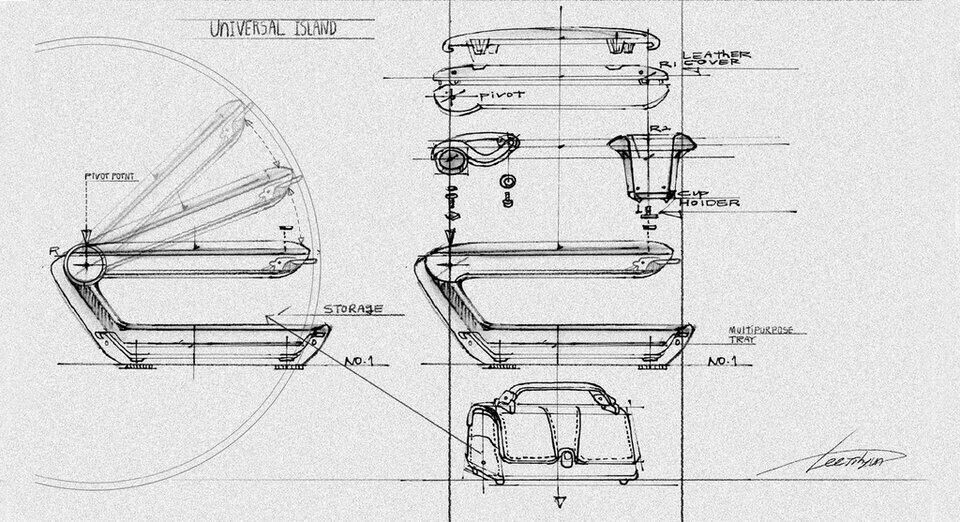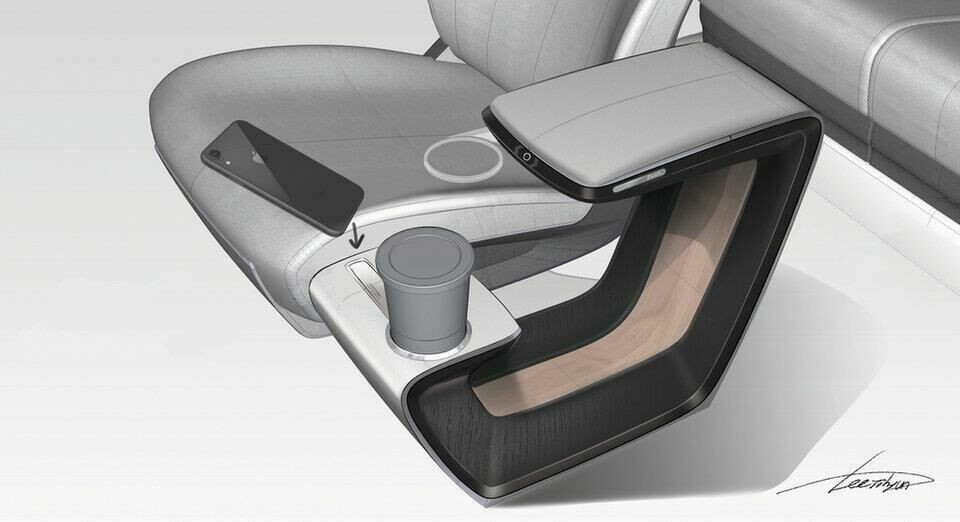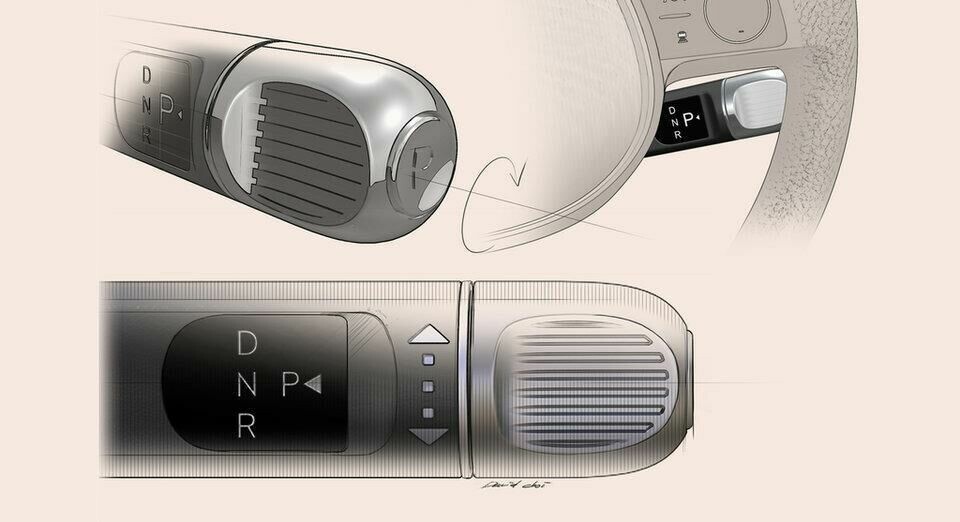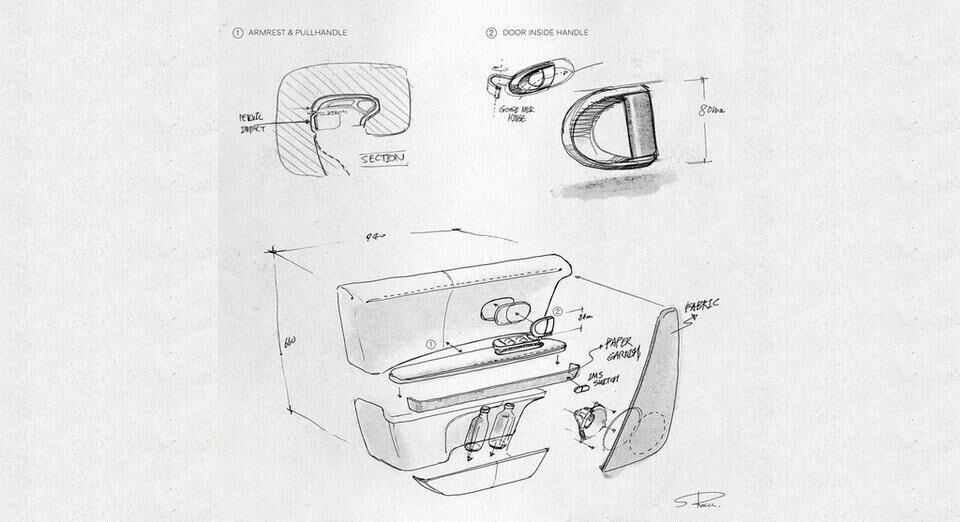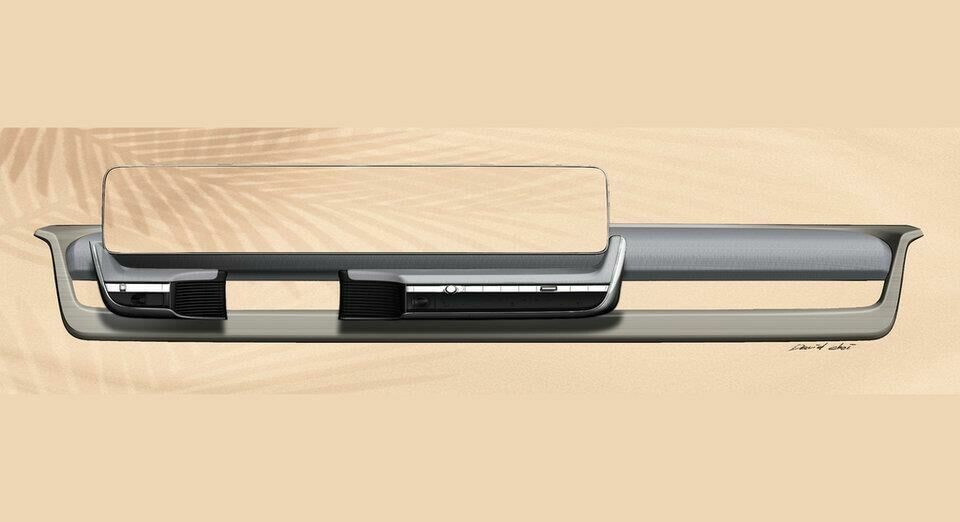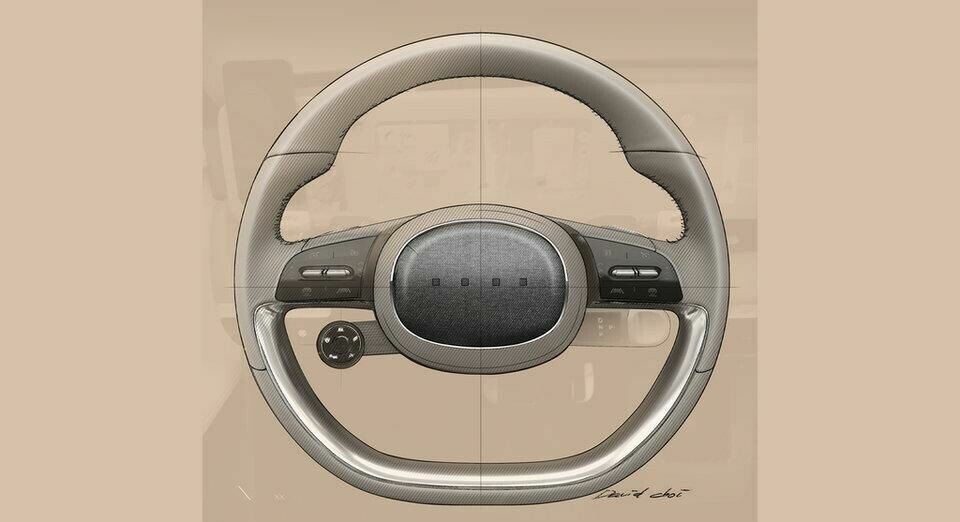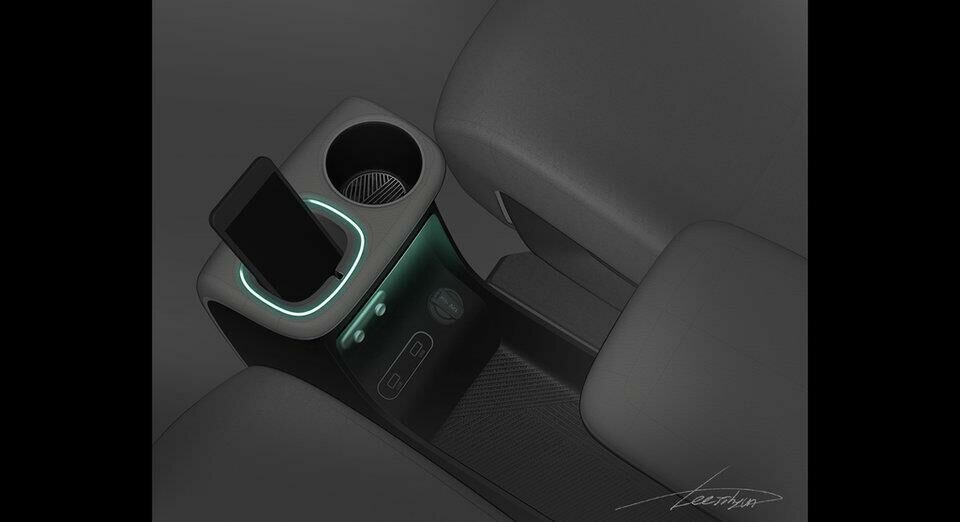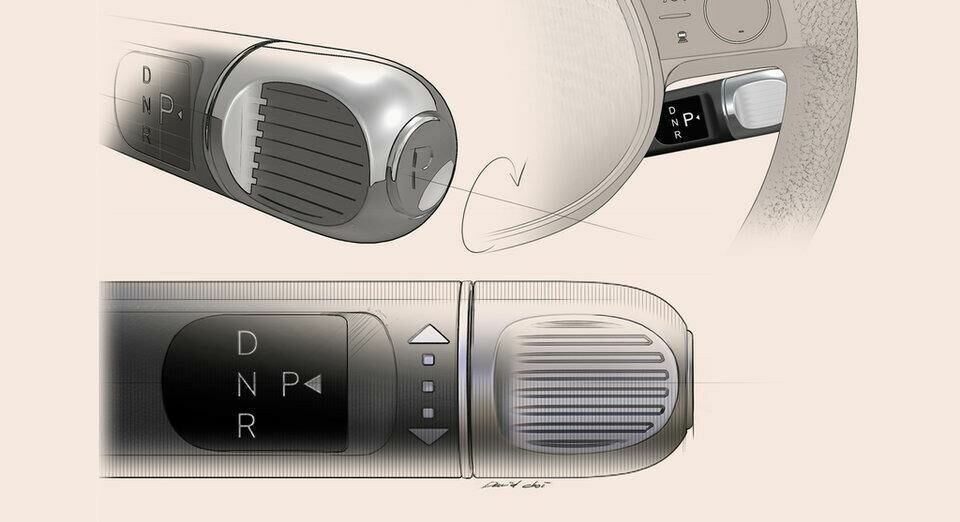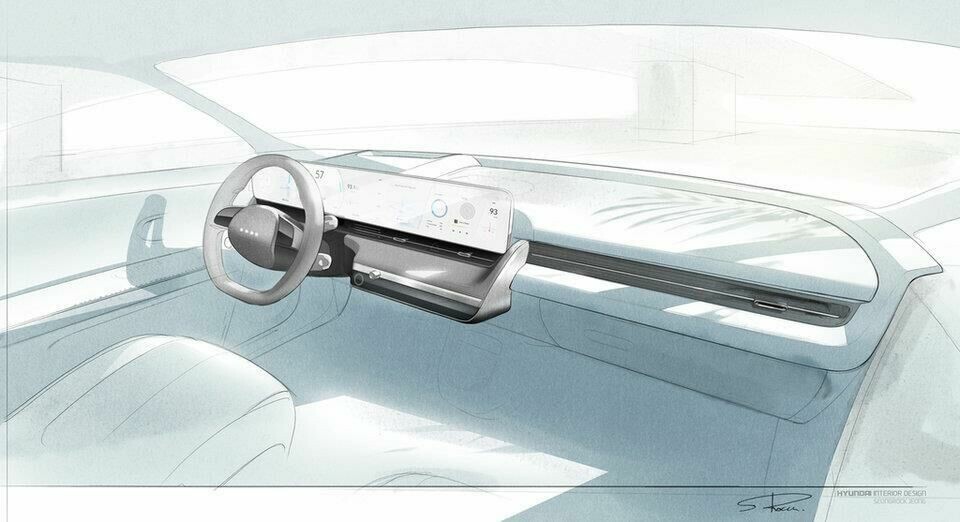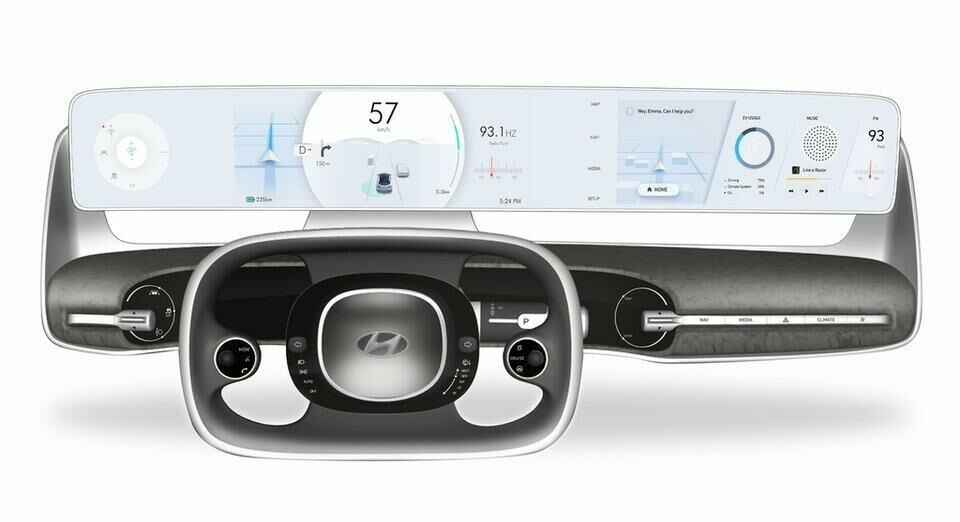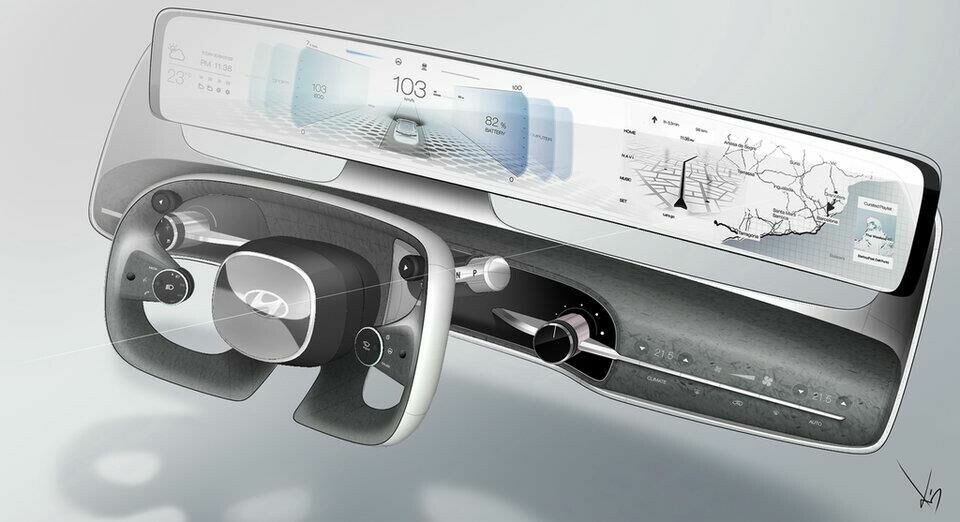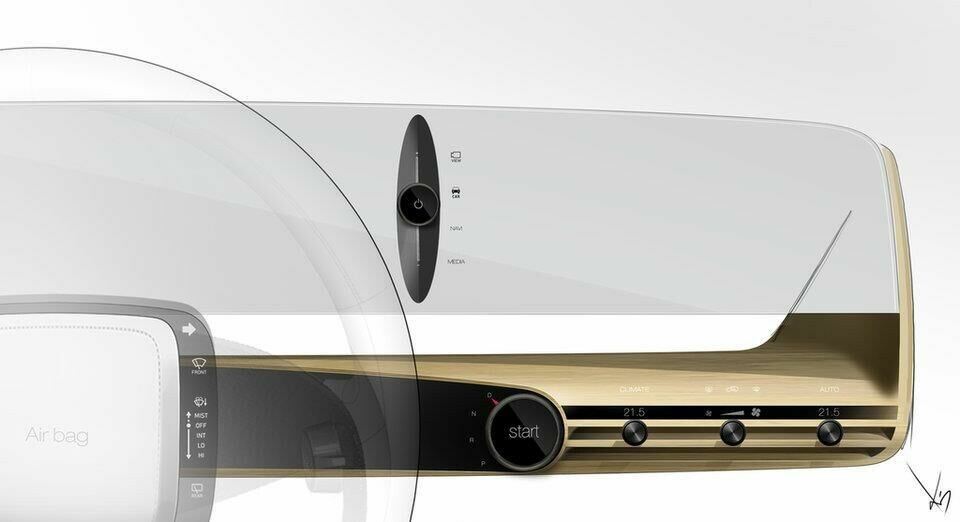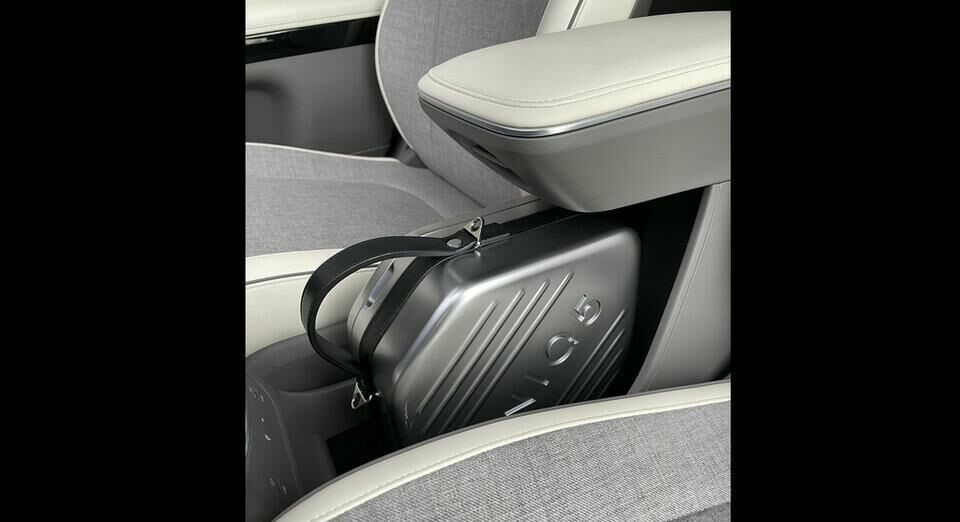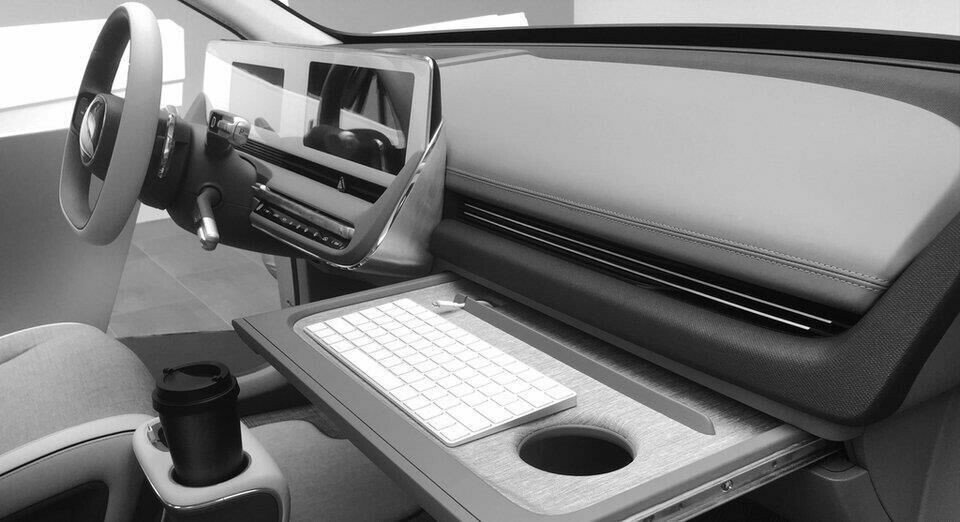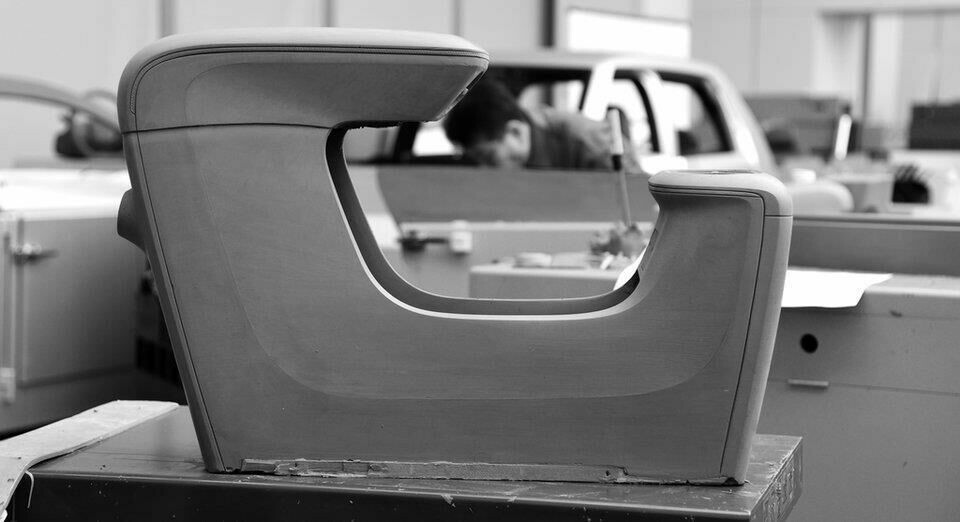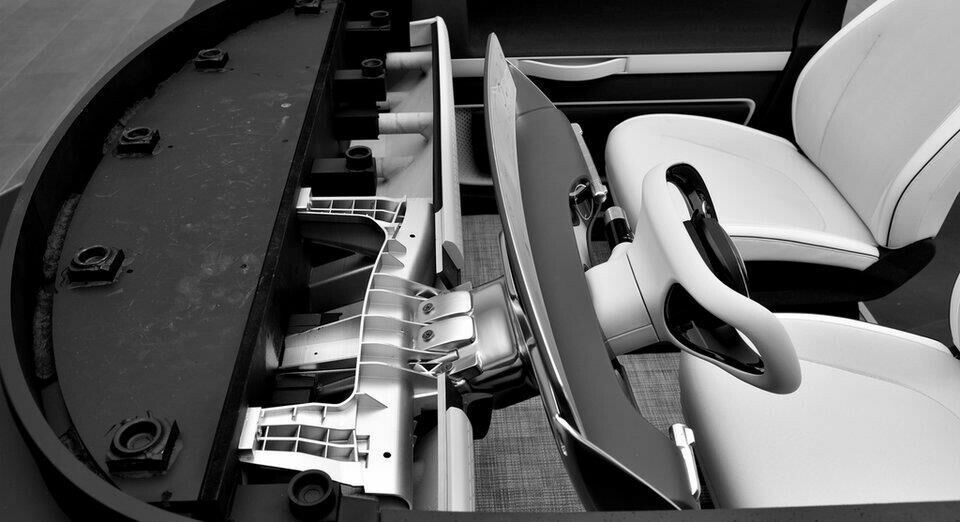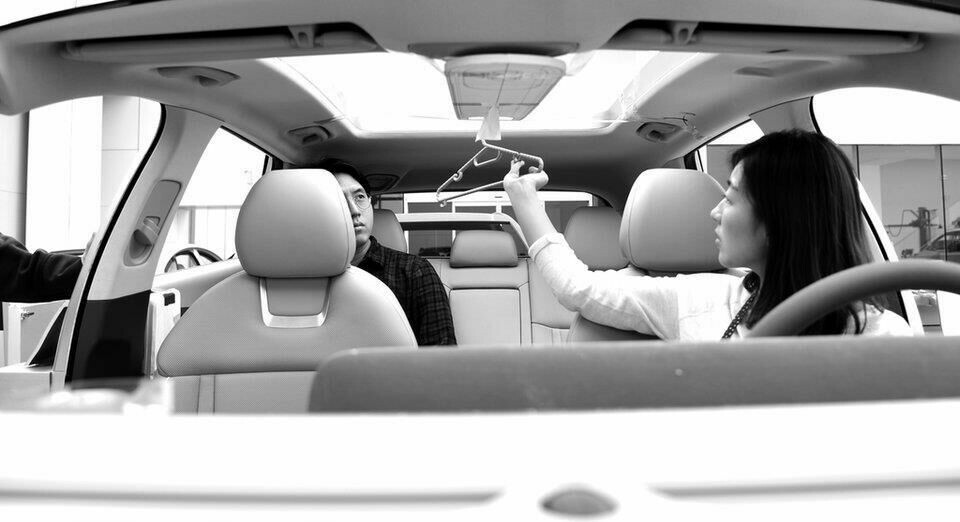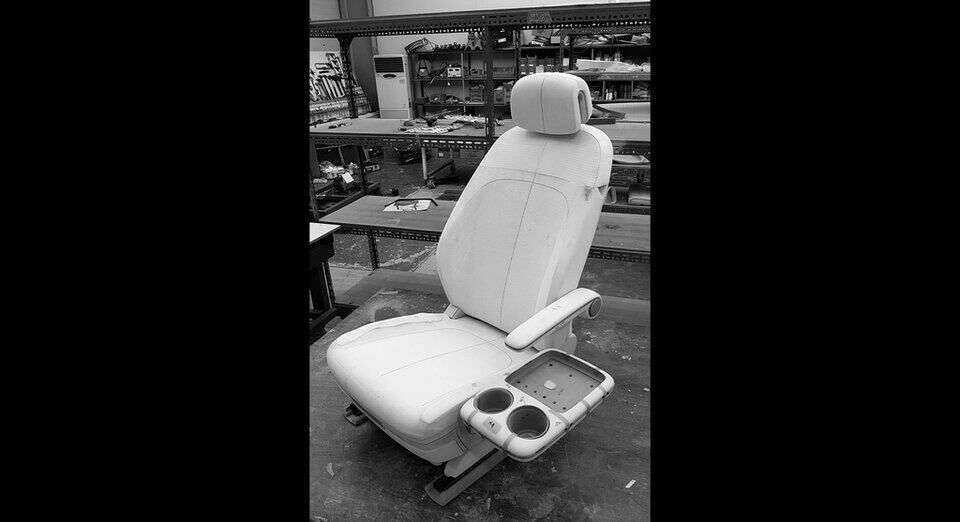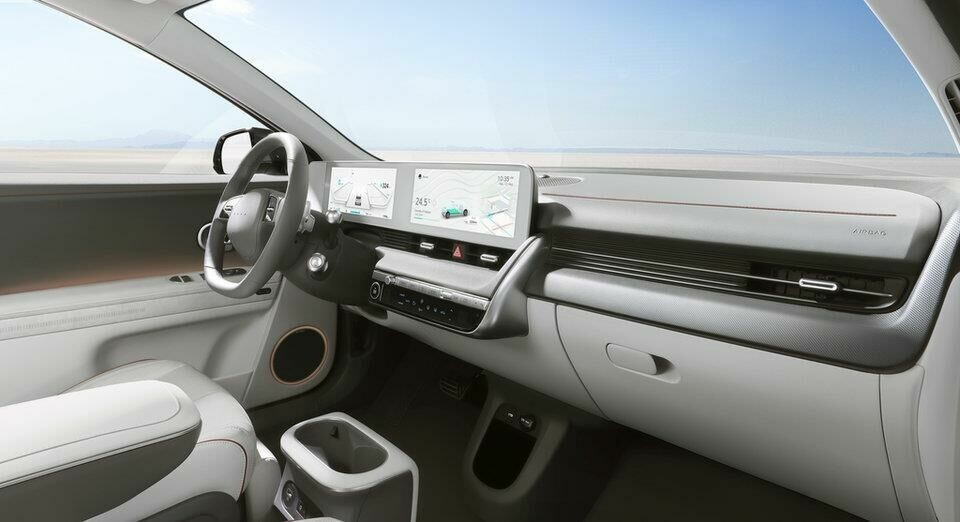
Interior Motives Spring 2021: Hyundai Ioniq 5
A calming colour palette, sliding centre console and fridge magnet style personalisation – Hyundai’s Ioniq borrows from domestic design to create a coherent, usable interior rather than ‘la la land’ concepts
When the full-electric production Hyundai Ioniq 5 unveiled in late February 2021, its shape was not a surprise to those who had seen the 45 concept 18 months before at the 2019 Frankfurt motorshow. But its similarity was, and that’s refreshing. Yes, regular-opening doors with flush handles and wing mirrors have replaced the concept’s sliding, touch-sensitive ones with rear-view cameras, but the long wheelbase proportion and 1974 Pony-inspired silhouette remain.
And that stretched wheelbase was a key factor from the start of the interior design process. At 3000mm long the Ioniq 5’s wheelbase is massive in comparison to its overall 4635mm length. It’s like having a Mercedes GLE wheelbase within a Mercedes GLB. In our exclusive one-to-one interview, head of Hyundai global design, SangYup Lee, picks up the story. “With our first EV-specific E-GMP platform we wanted to create something very contemporary, yet respecting our past,” he says. “The concept was an ‘inside-out’ design. The Ioniq 5 is mid-size but its interior offers something mid-to-large in terms of legroom. We really wanted this car to have the maximum interior space within its boundary. The consequence for the exterior was to put the side glass as ‘outboard’ as possible. The car doesn’t have a ‘shoulder’ so the glass doesn’t go inward. It’s all about space innovation.”
The Ioniq 5 stands apart by bringing innovation to its spacious cabin though, most notably with its ‘Universal Island’ moving centre console. Able to sit in line with the edge of the front seats or slide 140mm backwards to become more accessible to rear passengers, the unit appears similar to the one in the current Renault Scenic, but as Hyundai’s design team opted to shift the Ioniq 5’s gear selector to the steering wheel column, a walk-through flat floor – and point of difference – is created. As Lee says: “If you’re stuck in a tight parking space you can slide the console back and walk across the front of the car’s cabin easily.” He also points out that the Ioniq 5’s column shifter is closer to the driver’s reach zone and easier to see and use, in comparison to those by VW and Mercedes, which he believes are more hidden. SangYup Lee, picks up the story.
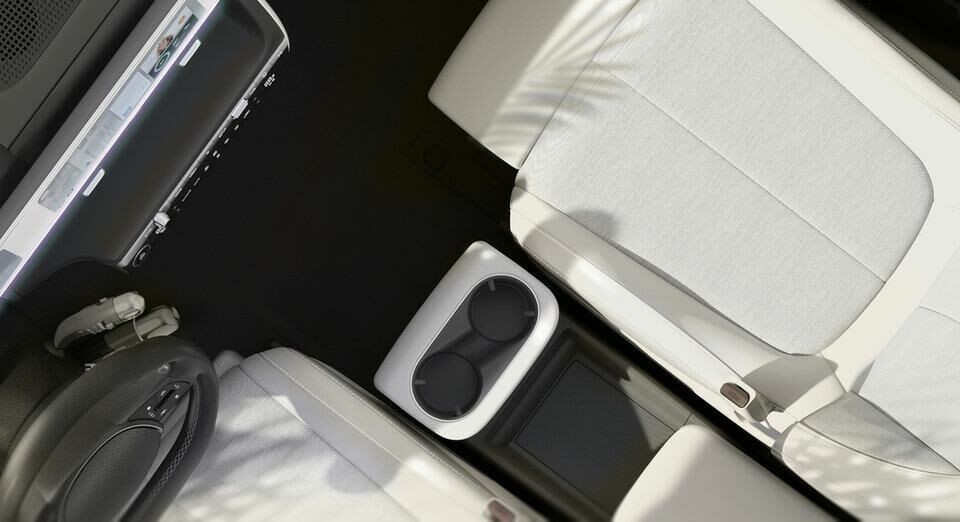
“With our first EV-specific E-GMP platform we wanted to create something very contemporary, yet respecting our past,” he says. “The concept was an ‘inside-out’ design. The Ioniq 5 is mid-size but its interior offers something mid-to-large in terms of legroom. We really wanted this car to have the maximum interior space within its boundary. The consequence for the exterior was to put the side glass as ‘outboard’ as possible. The car doesn’t have a ‘shoulder’ so the glass doesn’t go inward. It’s all about space innovation.”
Either way, judging by the various conceptual sketches, the Universal Island’s cantilevered shape was strongly influenced by smart domestic side tables and important to its design was that it should be able to fit sizeable items – like a women’s handbag – under its arm. It took perseverance to make production. “It was originally a design department idea and in the beginning I didn’t get a lot of internal support, simply because engineering hadn’t done it before,” says Lee. “But they did a good job. On bumpy roads this console shouldn’t shake, so it’s solidly attached.”
Although the movable island wasn’t featured in the 45 concept many other features were, and have made it through to production. The concept’s basic IP design with a lozenge-shaped, curved infotainment screen – made up of two 12.5in screens on the production model – is one aspect that looks to have been largely retained, as has its positioning, if not exact treatment. Within the concept the main function ‘buttons’ for home, media, volume and aircon underneath the screen were ‘shy tech’ style, back-lit and hidden under the surface. On the production model they’re physical buttons, knobs and toggle switches but Lee strongly hinted that some similarly special lighting features would arrive in the second year of the Ioniq 5’s lifecycle. Under interrogation Lee suggested lighting under the steering wheel’s central hub could soon indicate, among other things, when EV charging was active, partly by way of explaining why the hub doesn’t have a Hyundai logo now. In other words, it would get in the way of what’s planned.
“Vegan leather is fundamentally still plastic so it’s not necessarily that eco-friendly,”
The Ioniq seats area also significantly different. They’ve morphed from conceptual wide-and-swivelling domestic lounge chairs with wood veneer shells to more conventionally-bolstered automotive ones, although the latter still offer innovation. The seats are 15mm slimmer than previous production seats without losing structural rigidity and offer a new mode, akin to first-class plane travel. “We challenged our engineers to put in swivelling seats but at the moment they are only [legally] allowed to turn by 15 degrees and that can make them heavy,” says Lee. “So we came up with the zero-gravity seat for when the car is parked and you want to relax. The seat angle allows you to lie down with leg support to gain a lounge feel.”
The seat upholstery also has a small story to tell but there’s no vegan option, as Hyundai’s upmarket EV rivals are keen to promote. “Vegan leather is fundamentally still plastic so it’s not necessarily that eco-friendly,” Lee says. “This is why we use a cowhide where a lot of the chemical treatments have been replaced with natural oils. We used this eco leather for the first time in our Nexo fuel cell car and on the Ioniq 6 and 7 we will use even more.” Recycled PET plastic bottles, plant-based yarns and natural wool feature within many of the surface coverings for the seating, door trim, armrest and headliner too.
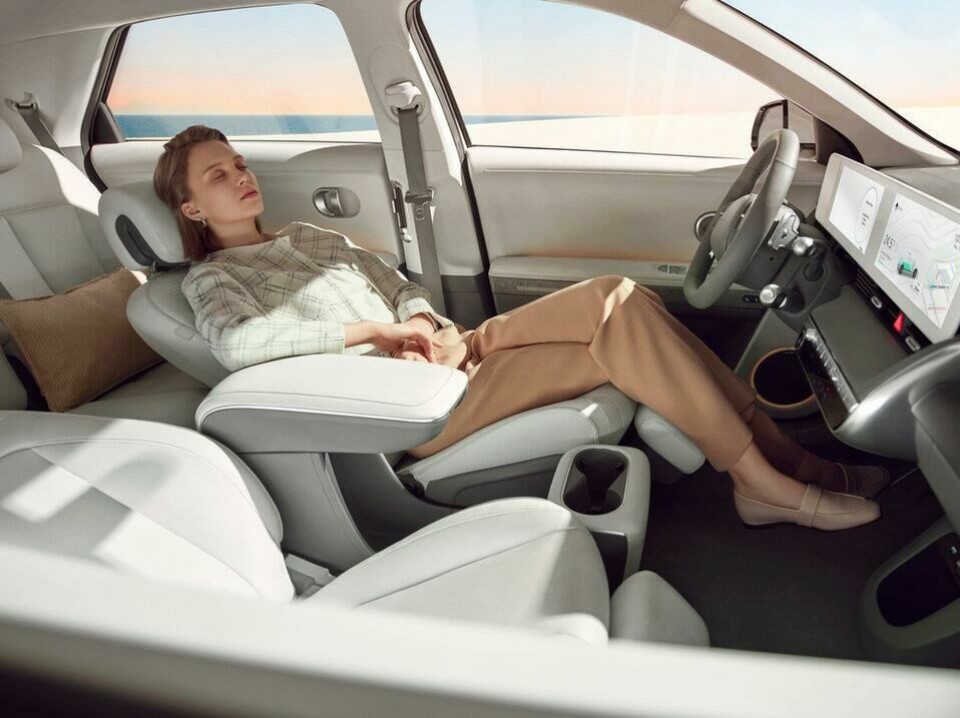
On the front passenger side, the glove box opens horizontally like a drawer, again to ape a domestic interior, as well as acting as a useful place to rest large portable devices. At the smaller side of the IP – to the left of the steering wheel in these left-hand drive images – there is a small magnetic board for placing fridge-style magnets and memos. “These are small stories but people love them,” says Lee, “so this sort of attention to detail is very special”. But judging by the less-is-more studio space behind him when we conduct our virtual video meeting, I put it to Lee that maybe he’s not the target audience for this particular feature? He laughs a lot, before answering: “It’s customer choice and it’s not a metal board it’s a piece of fabric, so even without attachments it’s a very nice element. But [you’re right] I don’t put magnets on my fridge.”
We didn’t want to make a ‘La La land’ concept impossible to execute in production.
A home-inspired detail on the 45 that Lee liked more but couldn’t make production (yet) is the slatted sunroof blind which created such eye-catching light patterns within the concept’s cabin. “We weren’t able to put a slatted blind in because of homologation issues to do with materials and making sure it didn’t rattle in extreme conditions,” says Lee, before keeping us hopeful, “but we’re still pushing for it and the Ioniq 5 is not the last EV from Hyundai.”
Meantime, the Ioniq 5 has the 45’s large panoramic roof and adds a retractable blind instead. Truth be told, while the 45 concept did influence the Ioniq 5 production car, it was more of a two-way street than is sometimes the case, as Lee admits: “We didn’t want to make a ‘La La land’ concept impossible to execute in production. We were developing the production and concept cars in parallel, so we could learn from both. I challenged my team to make the production car even better than the concept and it helped that we got great feedback for the concept when we were developing the production car. That gave us energy to push with management to keep it like the concept.”
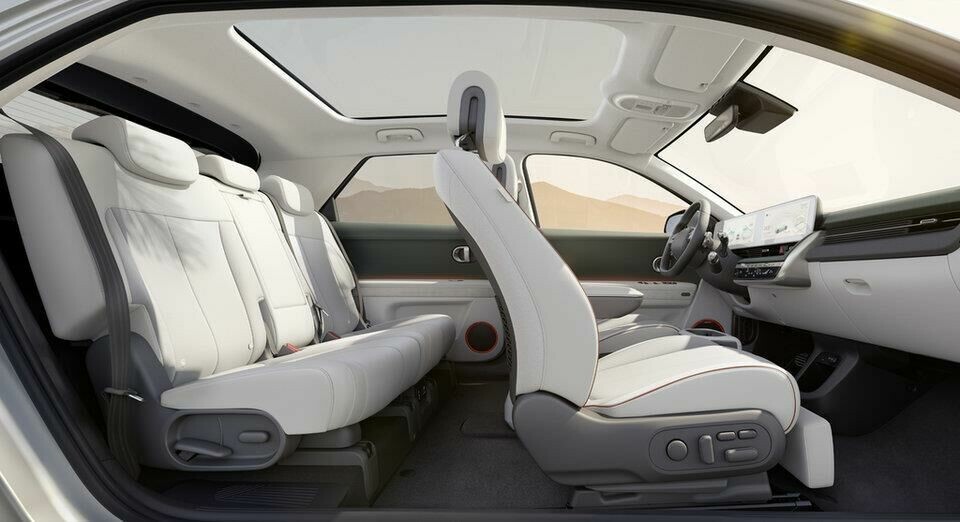
Lee says the whole programme started in mid-2017 and the concept began in 2018. Three different proposals from Hyundai’s California, Europe and Korea design studios were pitched and the latter studio won out with its Pony-influenced design. Lee seems particularly proud of the overall result and also how the task has re-invigorated his way of working and thinking. As he concludes: “In 25 years I’ve never worked on a 100% EV-based platform car before. In the beginning, we did a lot of stylised cars but they simply weren’t innovative enough in their packaging. Autonomous and purpose-built vehicles will change the world as people might start buying cars based on how big the living space is in square metres, rather than any styling. It’s going that way. That’s why the Ioniq 5’s living space concept is so important. Traditional car styling I have to forget about.”
